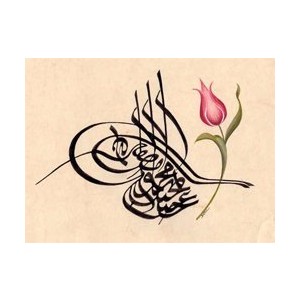
A reader’s suggestion for putting tulips in the garden reminds me of this passage in my history of the Ottomans, Lords of the Horizons:
The tulip was the emblem of the Ottoman royal house, worked into textiles and inlay, and celebrated in poetry: the romantic tulip of Central Asia, that is, a lyre-shaped flower with pointed petals. For a brief period at the end of the seventeenth century the tulip’s sway in the Ottoman garden was challenged by melons and cucumbers; but under Ahmet III in the 1720s it came back into favour with a frenzy which recalled, in its less sordid aspects, the tulipomania of seventeenth-century Holland.
The Dutch mania had been a speculator’s bubble. In Turkey tulipomania came to symbolise the hedonism of the court. Sultan Ahmet III had so many children that with all the births, circumcisions and daughters’ weddings a permanent holiday atmosphere reigned in the Seraglio. ‘Let us laugh, let us play, let us enjoy the delights of the world to the full,’ wrote the court poet Nedim, a particular favourite of Sultan Ahmet’s. Grizzled old kapudan pashas stooped tenderly over the bulbs with little trowels; the head gardener laid his executioner’s tools aside, and dazzling were the nightly displays in the palace in the fleeting growing season. The French ambassador described such an evening at the house of Grand Vizier Damad Ibrahim Pasha in 1726:
When the tulips are in flower, and the Grand Vizier wishes to show them to the sultan, care is taken to fill the gaps where the tulips have come up blind, by flowers taken from other gardens and placed in bottles. Beside every fourth flower is stood a candle, level with the bloom, and along the alleys are hung cages filled with all kinds of birds. The trellises are all decorated with an enormous quantity of flowers of every sort, placed in bottles and lit by an infinite number of glass lamps of different colours. These lamps are also hung on the green branches of shrubs which are specially transplanted for the fete from neighbouring woods and placed behind the trellises. The effect of all these varied colours, and of the lights which are reflected by countless mirrors, is said to be magnificent. The illuminations, and the noisy consort of Turkish musical instruments which accompanies them, continue nightly so long as the tulips remain in flower, during which time the Grand Seigneur and his whole suite are lodged and fed at the expense of the Grand Vizier…
For ten years the whole of Constantinople gave itself over to illusions of fairyland. Giant turtles bearing flickering candelabra paddled through the Seraglio grounds. ‘Sometimes the court appears floating on the waters of the Bosphorus or the Golden Horn, in elegant caiques, covered with silken tents; sometimes it moves forward in a long cavalcade towards one or another of the pleasure palaces… These processions are made especially attractive by the beauty of the horses and the luxury of their caparisons; they progress, with golden or silver harnesses and plumed foreheads, their coverings resplendent with precious stones.’
At the back of it, though, lay policy desperate and inspired: it was all the handiwork of a single Grand Vizier, Damad Ibrahim Pasha, who feverishly worked the silken threads…
From Lords of the Horizons: A History of the Ottoman Empire






